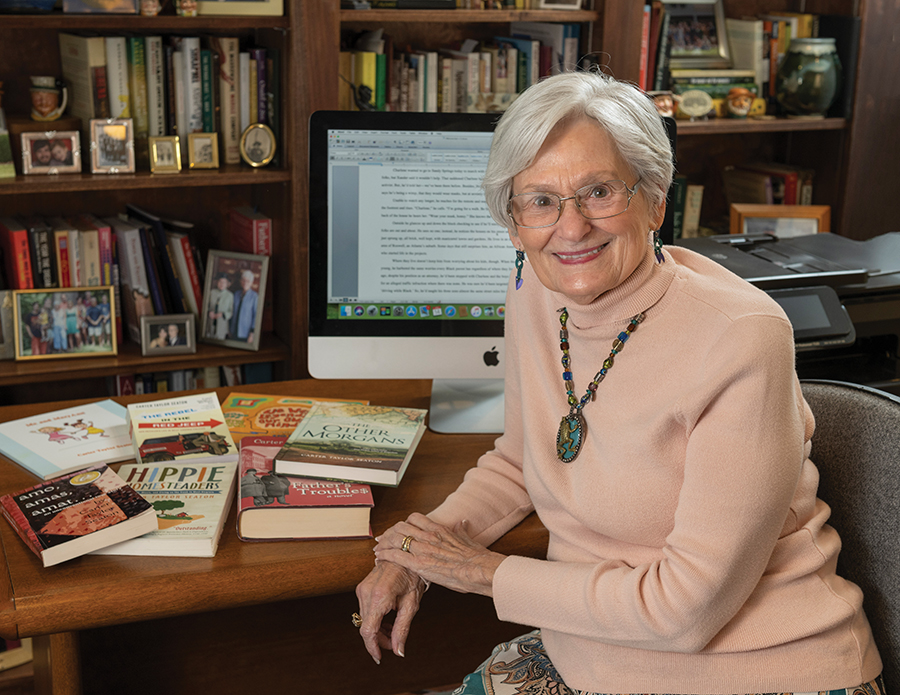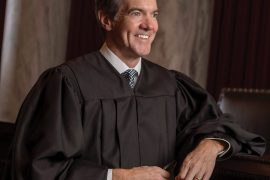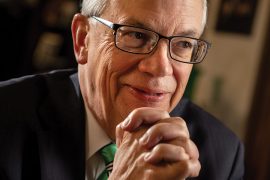Carter Taylor Seaton may be 80, but the author and sculptor continues to turn out books and art, and has no plans of ever slowing down.
By Michael Friel
HQ 112 | WINTER 2021
Ask people who know her to describe Carter Taylor Seaton and a theme quickly emerges: She is a woman of dogged determinism who gets things done — lots of things. She is the author of seven published books, an accomplished sculptor, a former marathon runner, a certified scuba diver and a tireless matron of the arts. These feats are all the more remarkable considering that most were accomplished after she raised four children, ran a rural crafting cooperative for women, enjoyed a successful career as a marketing executive and event planner and turned 50 years old.
Now 80, she has no plans to slow her roll. “That would be a waste of time,” she said. “There’s too much to do.”
 Carter Taylor Seaton was born New Year’s Day 1941 in Huntington to Dorothy and Harvey C. Taylor Jr. She grew up on Glenway Lane with her parents and younger brother Harvey III. “It was the 1940s, what can I say? We were free to do absolutely anything,” she recalled. “My mother would send me outside in the morning to play and say ‘come back at lunch,’ and that was about it.”
Carter Taylor Seaton was born New Year’s Day 1941 in Huntington to Dorothy and Harvey C. Taylor Jr. She grew up on Glenway Lane with her parents and younger brother Harvey III. “It was the 1940s, what can I say? We were free to do absolutely anything,” she recalled. “My mother would send me outside in the morning to play and say ‘come back at lunch,’ and that was about it.”
Books were a big part of Seaton’s formative years. She recalled reading the Dr. Doolittle series, the Oz books by L. Frank Baum and the Uncle Wiggily collection, to name a few. “I read virtually all of the time. When I wasn’t playing outside, I was in the house reading.”
Seaton’s affinity for reading was reinforced by two beloved aunts —Elinore Taylor, an English professor at Marshall University, and Nancy Taylor, a librarian — who Seaton said probably had more influence on her than her own parents. “I can’t remember receiving a gift from either of those women that was not a book from the time I was a small child on.” Young Carter created a library from her own collection of books called The Library for Children. “I wouldn’t let my friends borrow my books unless they signed them out.”
Seaton attended Meadows Elementary, Cammack Junior High and Huntington High before graduating from Marshall Lab School in 1958. She enrolled in college at Marshall, taking classes on and off while juggling family obligations and work life. It took 20-plus years, but she graduated cum laude in 1982 with a degree in English and business.
From 1971 to 1984, Seaton directed Appalachian Craftsmen, a rural arts cooperative to benefit low-income women. She was nominated by Ladies Home Journal in 1975 for its “Woman of the Year” award for that work. In 1985 she moved to Columbus, Georgia, to accept a marketing position. Three years later it was onto Atlanta where she started her own business producing special events for the hospitality industry.
While living in Georgia, Seaton developed a passion for running and pursued it full tilt. She joined a running club, hired a coach and ran several marathons, including the New York City Marathon, all after age 50. “Talk about perseverance. It took me five hours, but I finished, by golly.” She took up scuba diving at about the same time. Influenced by her brother, an avid diver, she earned her certification in one week. “What an experience that was. I just loved it.”

After 10 years in Georgia, Seaton returned to Huntington to spend more time with her four grandchildren. She accepted a position with Goodwill Industries of KYOWVA Area, from which she retired in 2013. It was upon her return that she became “an accidental novelist.” Her first book, 2003’s Father’s Troubles, began as a work of nonfiction based on family research, but morphed into the story of a woman who embarks on a quest to discover the truth about her grandfather, whose unbridled ambition led to family tragedy. Her most recent novel, The Other Morgans, tells the story of a West Virginia woman who struggles to make a life-changing decision after an unexpected inheritance.
As is the case with Father’s Troubles, all of Seaton’s novels feature strong female protagonists. Seaton’s nonfiction works also have a common thread in that they highlight the lives of non-conventionalists: back-to-the-land artists and musicians in Hippie Homesteaders, maverick politician Ken Hechler in The Rebel in the Red Jeep and the renegades of rock ‘n’ roll in We Were Legends in Our Own Minds, which she co-authored with husband Richard Cobb. She also wrote a collection of children’s stories called Me and MaryAnn about two somewhat naughty girls growing up in the 1940s and ’50s.
Seaton credited the late Bobby Nelson, former legislator and Huntington mayor, with paving the way for her to write The Rebel in the Red Jeep. “He came up to me one day and said, ‘Have you ever written a biography?’ I said, ‘No, but I’ve written dozens of personal profiles for the Huntington Quarterly magazine. It seems to me a biography is just a longer version.’” Nelson gave Hechler copies of her books. Within a week the former congressman met with Seaton. Within three hours, she began writing his life story.
Hechler was 98 at the time, but his memories were vivid.
“Most of the time he already knew what he wanted to talk about,” Seaton recalled. “He would set off talking for half an hour and then he would let me ask a question or two. I had to do immense amounts of reading to even have intelligent questions to ask the man.” That included poring through 750 boxes of Hechler material housed at Marshall. “So, 1,200 footnotes later, I had his biography.”

Seaton recently completed a draft of a new novel, which she described as a real departure. It tells the story of a black teenager in the 1960s who holds a secret that he thinks is relevant to the murder trial of his friend’s brother. The story focuses on how the teen deals with the secret and how it changes his life.
While Seaton enjoys the writing process, she said the real reward is having people say her books made a difference. “A friend called me just yesterday and said he had read my latest novel (The Other Morgans) not once but twice. He said he liked it the second time even better than the first time. Then there’s my novel amo, amas, amat. It’s the story of a homophobic young woman who, unbeknownst to her, falls in love with and marries a closeted gay man. People told me that novel was kind of a revelation for them. And it changed their thinking. Now that makes me feel like I really made a difference.”
 Books are like children — it is difficult to name a favorite — but Seaton said she takes great pleasure in having written Hippie Homesteaders. “That book to me was a real joy because those were people I already knew, and it was like sitting down with old friends and having them tell me their story of how they came to West Virginia. They never realized until they read my book that they had been part of something bigger than themselves. They just assumed that they were doing their own little thing. They never realized quite what a huge impact they made on the state.”
Books are like children — it is difficult to name a favorite — but Seaton said she takes great pleasure in having written Hippie Homesteaders. “That book to me was a real joy because those were people I already knew, and it was like sitting down with old friends and having them tell me their story of how they came to West Virginia. They never realized until they read my book that they had been part of something bigger than themselves. They just assumed that they were doing their own little thing. They never realized quite what a huge impact they made on the state.”
In support of other writers, Seaton hosts a local program called Chapters on Armstrong Cable during which she interviews authors about their works. She is involved with Writers Can Read, a monthly public event in Huntington for featured authors and budding writers to share their works. She coordinates the West Virginia Writers Annual Writing Contest and is a member of the Mayor’s Council on the Arts.
In her “free time,” Seaton still enjoys reading, especially the fiction of such contemporary authors as Pat Conroy, Barbara Kingsolver, Fredrik Backman and Margaret Atwood. “I’m never without a book in progress.” She also enjoys sculpting and is highly regarded for her ability. Her work has been featured at Tamarack and selected for inclusion in the West Virginia Juried Exhibition. Her commissioned works include a sculpture of Cabell County’s namesake, former Virginia Gov. William Cabell, which is displayed in the courthouse rotunda; and a sculpture of Young Thundering Herd captain Nate Ruffin, which resides at Marshall’s Brad D. Smith Foundation Hall.
Seaton has been honored countless times for her work. Accolades for which she said she is most proud include the Governor’s Award for Lifetime Achievement in the Arts, the Marshall University Distinguished Alumni Award and, for The Rebel in the Red Jeep, the national Ella Dickey Literacy Award presented to authors for their contributions to the preservation of history.

Here at home, Seaton continues to earn recognition for her dedication to the arts. Huntington Museum of Art Education Director Cindy Dearborn praised Seaton, who has served as chair of the museum’s education committee. “As an accomplished writer and artist herself, Carter understands the power of the arts to transform lives.” Mayor Steve Williams, who has worked with Seaton since 1985, echoed that sentiment. “She is a talented artist, and, just as important, she is a dedicated advocate for the arts. I trust her judgment and know that anything she becomes involved in is done first class or it isn’t done.”
. . . .
With all that she’s accomplished, is there anything that Seaton cannot do? She did not hesitate when asked the question. “I’m not the slightest bit musically inclined. I can’t sing a lick.”
That’s Carter Taylor Seaton: Immensely talented, highly dedicated, widely creative … and, yes, modest.





